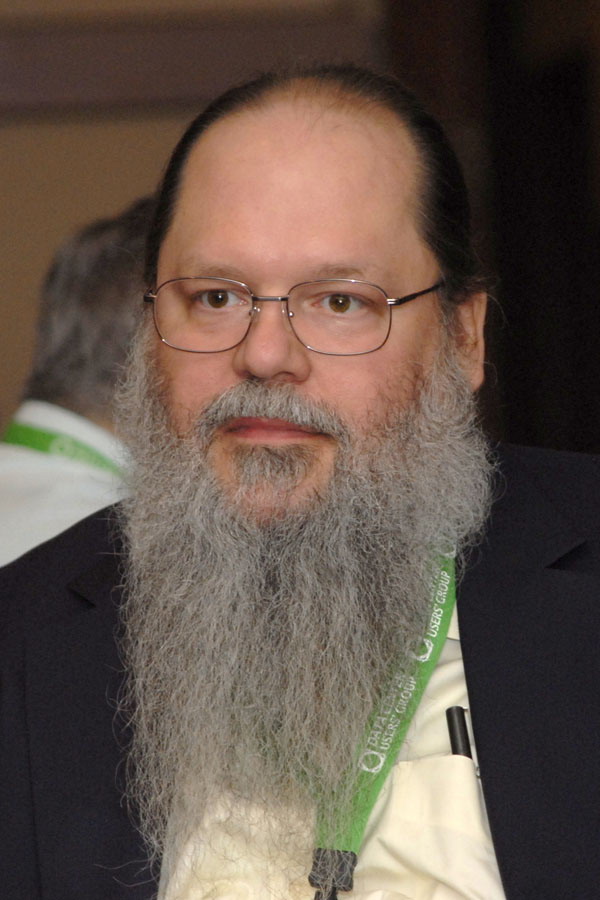We are here today with Bob White, the originator of the PMBus power management protocol, long time chair of the PMBus specification working group, and current editor of the PMBus and SMBus specifications. Bob is the principal author of the PMBus specifications and continues to participate in the PMBus Specification Working Group. He is a well-known speaker and author who regularly presents papers and seminars at conferences such as the IEEE Applied Power Electronics Conference (IEEE APEC). In part one of this virtual interview, Bob reviews updates under development for the current PMBus 1.4 specification. In part 2, Bob will look into the future and the developments anticipated for PMBus 2.0. The following is from an interview with Bob by EEWorld’s Jeff Shepard.
JS: Bob, it has been a while since the PMBus group has released any updates. Can you tell us what the PMBus group has been working on?

BW: Jeff, as you said, the PMBus group has been quiet for a while, but we have been busy.
We have been working on updates to the existing generation of specifications while looking ahead to a new generation of PMBus. For the current generation version, 3.2 of the SMBus specification and version 1.4 of the PMBus specifications are in the final rounds of review, comment, and editing.
JS: What kind of updates are in the next release of the SMBus specification?
BW: The changes in version 3.2 of the SMBus specification, compared to version 3.1, are mostly corrections of minor errors in the text and figures. There are some clarifications, but no real changes to the function of the SMBus are in revision 3.2.
JS: The SMBus specification uses terms like “master” and “slave” to refer to SMBus devices. These terms are being criticized as insensitive, and other bus specifications are changing these terms. Is the PMBus working group considering any changes?
BW: Jeff, the working group is in tune with the need to change these terms. We are watching carefully and paying attention to what is decided for the I²C bus as the SMBus was an adaption and evolution of the I²C bus. At the moment, it appears that in the next releases of the SMBus and PMBus specifications, “controller” will replace “master” and “target” will replace the term “slave”.
JS: That is very interesting. Will the SMIF being going back and updating older revisions of the specifications with the terms “controller” and “target”?
BW: Jeff, we have talked about that, but at this time, there are no plans to update an older version of the specifications.
JS: Bob, thank you for the update on SMBus. What is next for PMBus?
BW: Jeff, as you know, the PMBus power management protocol was introduced to the world in September 2004 at the Darnell Power Forum. Revision 1.0 of the PMBus specification was released in March 2005. In the sixteen years since the PMBus specification has gone from revision 1.0 to revision 1.3.1. I think that the original PMBus specification has endured so well is a testament to the members of the original PMBus specification working group.
But times and technology change. In the original working group, we were very concerned about the cost of digital circuits in a power converter. We were very concerned with how the PMBus protocol could be efficiently implemented in the 8-bit microcontrollers of that time. Today the cost of digital is almost negligible, common digital communication bus speeds have gone from hundreds of kilohertz to gigahertz, and 32-bit processors like those based on ARM cores are ubiquitous.
To move the PMBus forward, the PMBus working group is taking a two-step approach. The first step is to wrap up the current generation of specifications with revision 1.4. The goal is that revision 1.4 is the last revision of this generation. We do not expect ever to have a revision 1.5.
Revision 1.4 will have some minor functionality updates and some important clarifications, especially around the PAGE_PLUS functionality. We had hoped to have revision 1.4 released last fall, but the mantra is “get it right” rather than rush the release. It seems like every time we are ready for the final review; someone finds another little typo, error in a figure, or point that could really use clarification. As we speak, it is the middle of January. The working group very much hopes to have revision 1.4 out for the final review and balloting before the end of Q1.
JS: Bob, thank you for taking time today to update the EEworld readers on some of the latest developments in PMBus.
BW: Jeff, thank you for the opportunity.
JS: Be sure to check out part two of this virtual interview that looks into the next generation of this important power management specification – “PMBus 2.0, expanding PMBus for future system needs.” Those who are interested and have the time to volunteer should send their name, contact information, and areas of interest to questions@smiforum.org.
About Bob White
Bob has more than 30 years of experience in designing power supplies, dc-dc converters, and power systems for electronic equipment. Currently, Bob is President and Chief Engineer of Embedded Power Labs, a consulting and design services company. He has held managerial and individual contributor positions in product development, technology development, systems and applications engineering, and technical marketing. He has previously been employed by companies such as Emerson Electric, Artesyn Technologies, AT&T Power Systems/Bell Laboratories, and the Digital Equipment Corporation.
Bob has a BSEE from MIT (1980) and an MSEE from the Worcester Polytechnic Institute (1991). He is currently pursuing a Ph.D. at the University of Colorado – Boulder under Professor Robert Erickson’s direction. He is a Fellow of the IEEE.


Leave a Reply